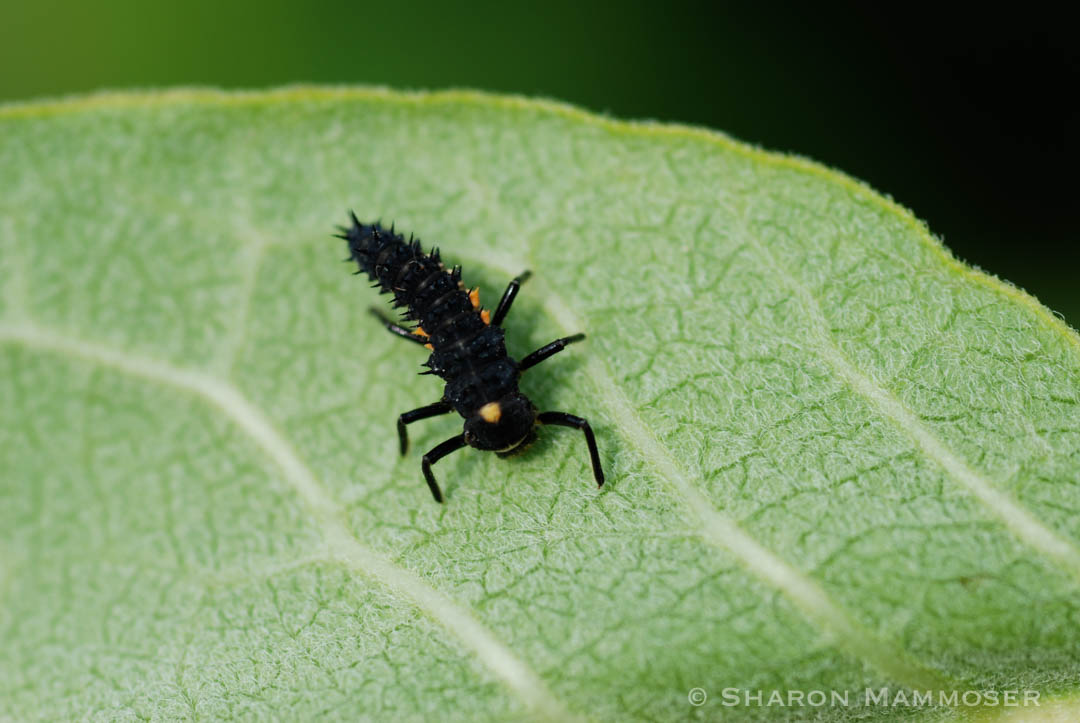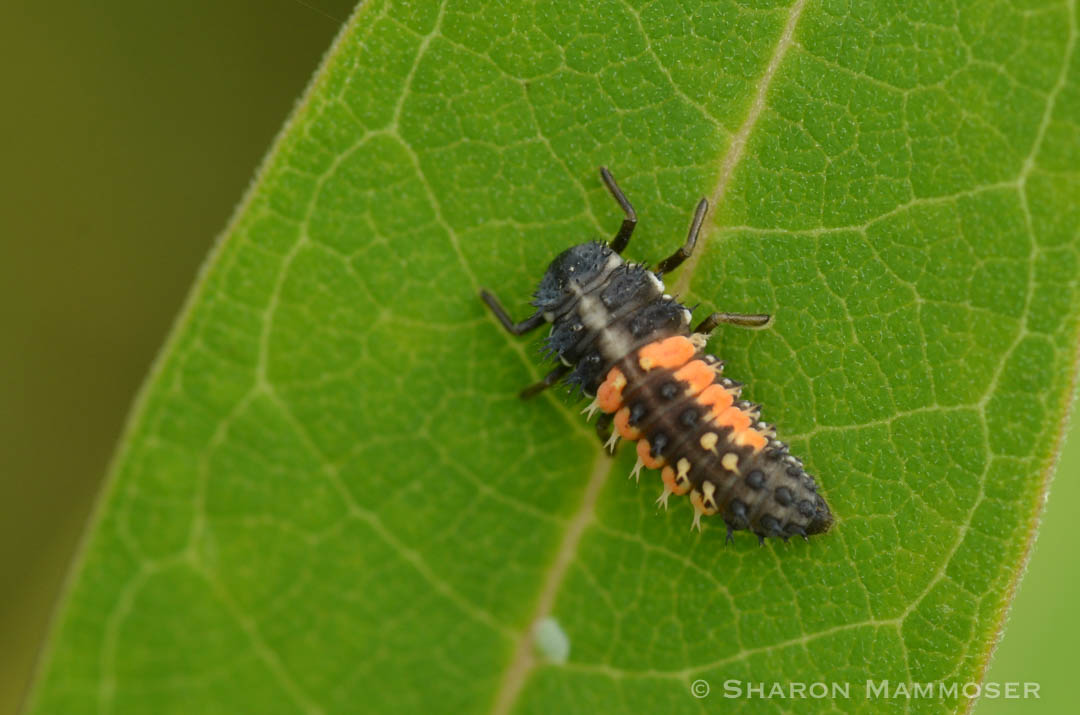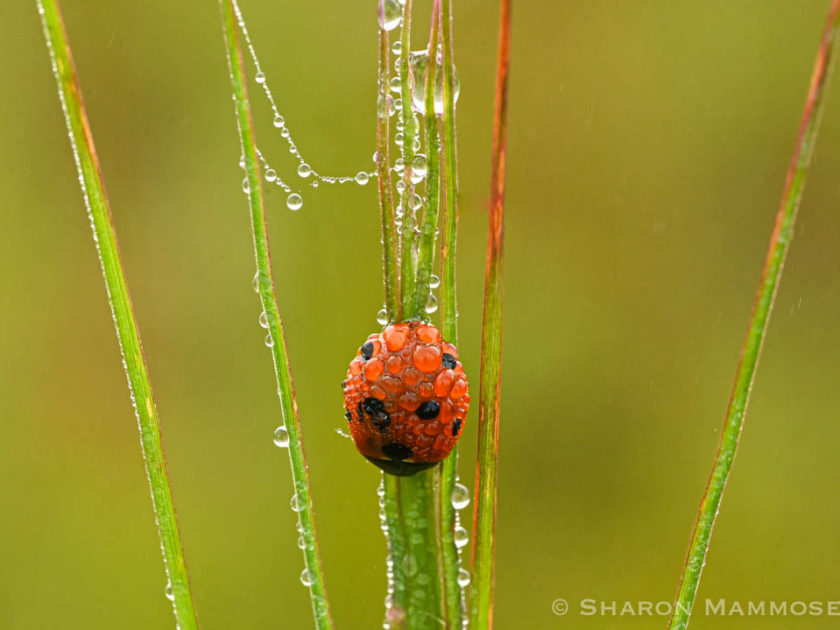The beautiful yellowish-orange eggs on the Milkweed leaf are ladybug eggs. Did you guess this when you saw them? Did you know ladybugs are a kind of beetle? Like other beetles, ladybugs they have two pairs of hard wing coverings called elytra. These cover and protect the delicate hind wings of the insect. Did you know beetles are the largest order of insects, with more than 400,000 named members? This makes up 40% of all insects and represents an amazing diversity.
In the world there are over 6000 different species of ladybugs, with 150 different kinds in the United States.

Ladybugs are a beneficial insect that is frequently found on milkweed, often feeding on the aphids that live there too. Aphids suck the juice of the plant, sometimes causing damage, especially to young plants. Ladybugs in both their adult and larval stage feed on aphids. Adults can eat as many as 50 aphids per day!
Did you know ladybugs look a lot different when they are babies/larvae? Like other insects that go through complete metamorphosis (think caterpillar becoming a butterfly), the baby stage of this insect look nothing like the adults. You’ve probably seen them in your garden or on the leaves of plants and wondered what they were. Now you know!



Did you know ALL the photos I use in all of my blog posts are taken by me? I spend a lot of time outside with my camera searching for insects and other things to photograph. I sometimes take photos of animals I can’t identify, looking them up later when I can use my field guides and internet sources. I’m always happy when I can use my photos to educate others about things in the natural world. I post on instagram too, under the same name as my website, natureformysoul. My posts there are often short and informative. I invite you to follow me there too!
Ready for another puzzler? I’m going to take an idea given to me by one of my blue ghost tour guests, who suggested I just show a small part of an animal and see if people could identify it. Let’s try it, starting with the bill of a bird that can be found in North America. See if you can identify it.


